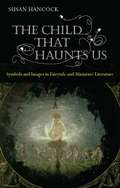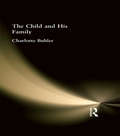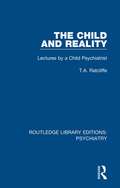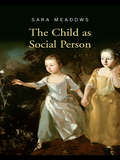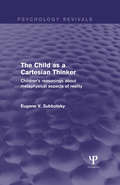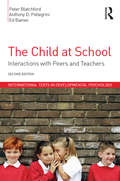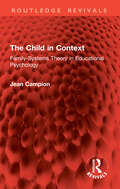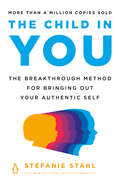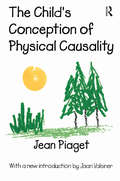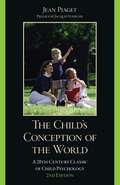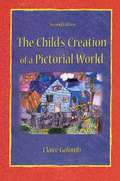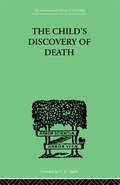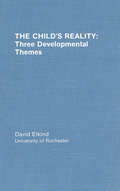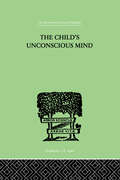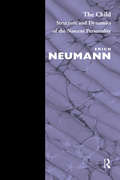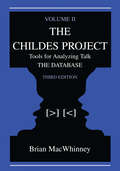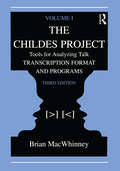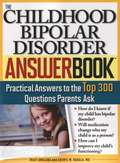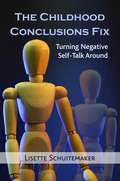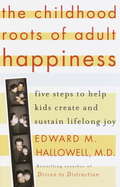- Table View
- List View
The Child Survivor: Healing Developmental Trauma and Dissociation
by Joyanna L. SilbergIn this second edition of Joyanna Silberg’s classic The Child Survivor, practitioners who treat dissociative children will find practical tools that are backed up by recent advances in clinical research. Chapters are filled with examples of clinical dilemmas that can challenge even the most expert child trauma clinicians, and Silberg shows how to handle these dilemmas with creativity, attunement, and sensitivity to the adaptive nature of even the most complex dissociative symptoms. The new edition addresses the impact of the Covid-19 pandemic on children and provides tips for working with traumatized children in telehealth. A new chapter on organized abuse explains how children victimized by even the most sadistic crimes can respond well to therapy. Clinicians on the front lines of treatment will come away from the book with an arsenal of therapeutic techniques that they can put into practice right away, limiting the need for restrictive hospitalizations or out-of-home placements for their young clients.
The Child That Haunts Us: Symbols and Images in Fairytale and Miniature Literature
by Susan HancockThe Child That Haunts Us focuses on the symbolic use of the child archetype through the exploration of miniature characters from the realms of children’s literature. Jung argued that the child archetype should never be mistaken for the ‘real’ child. In this book Susan Hancock considers how the child is portrayed in literature and fairytale and explores the suggestion from Jung and Bachelard that the symbolic resonance of the miniature is inversely proportionate to its size. We encounter many instances where the miniature characters are a visibly vulnerable ‘other’, yet often these occur in association with images of the supernatural, as the desired or feared object of adult imagination. In The Child That Haunts Us it is emphasised that the treatment by any society, past or present, of its smallest and most vulnerable members is truly revealing of the values it really holds. This original and sensitive exploration will be of particular interest to undergraduate and postgraduate students as well as academics engaged in Jungian studies, children’s literature, childhood studies and those with an interest in socio-cultural constructions of childhood.
The Child and His Family
by Buhler, CharlotteFirst published in 1999. Routledge is an imprint of Taylor & Francis, an informa company.
The Child and Reality: Lectures by a Child Psychiatrist (Routledge Library Editions: Psychiatry #19)
by T.A. RatcliffeDr Ratcliffe had long experience lecturing to a wide variety of audiences as a child psychiatrist. This title, originally published in 1970, is a collection of twelve of these lectures, given by him on various ‘special occasions’ during the years prior to publication, in which he emphasized the importance of environmental factors in understanding and working with children. The subjects include residential work with children, school phobia, adolescence, the problem family, relationship therapy and casework, the three-generation family, and child guidance techniques. The final chapter, based on a lecture originally given in the early years of the community mental health and social services, makes particularly interesting reading in the light of subsequent developments in these services. At the time this book would have been of great interest not only to professional workers, including doctors, teachers, child care officers, residential staff and health visitors, but equally to the student in each of these fields, and to the lay person who is genuinely concerned with children – and adults. Now it can be enjoyed in its historical context.
The Child as Social Person
by Sara MeadowsQuestions about how children grow up in their social worlds are of enormous significance for parents, teachers, and society at large, as well as for children themselves. Clearly children are shaped by the social world that surrounds them but they also shape the social worlds that they, and those significant to them, encounter. But exactly how does this happen, and what can we do to ensure that it produces happy outcomes? This book provides a critical review of the psychological literature on the development of personality, social cognition, social skills, social relations and social outcomes from birth to early adulthood. It uses Bronfenbrenner's model of the development of the person and up-to-date evidence to analyse normal and abnormal social development, prosocial and antisocial behaviour, within and across cultures. As well as outlining the theory, the book addresses applied issues such as delinquency, school failure, and social exclusion. Using a coherent theoretical structure, The Child as Social Person examines material from across the biological and social sciences to present an integrated account of what we do and do not know about the development of the child as a social actor. The Child as Social Person provides an integrated overview of the exciting field of developmental social psychology, and as such will be essential reading for advanced undergraduate students in psychology, education and social work, as well as postgraduates and researchers in these disciplines.
The Child as Thinker: The Development and Acquisition of Cognition in Childhood
by Sara MeadowsThis second edition of The Child as Thinker has been thoroughly revised and updated to provide an informed and accessible overview of the varied and extensive literature on children's cognition. Both theory and research data are critically examined and educational implications are discussed. After a brief discussion of the nature and subject of cognition, Sara Meadows reviews children's thinking in detail. She discusses the ways children remember and organise information in general, the acquisition of skills such as reading, writing and arithmetic, and the development of more complex reasoning as children grow to maturity. As well as studies that typically describe a generalised child, the book also reviews some of the main areas relevant to individual differences in normal cognitive development, and critically examines three major models of cognitive development. In outlining the work of Piaget, information-processing accounts and neo-Vygotskian theories, she also evaluates their different explanations of cognitive development and their implications for education. Finally, the book examines biological and social factors that may be involved in normal and suboptimal cognitive development. Sara Meadows provides an important review of the crucial issues involved in understanding cognitive development and of the new data and models that have emerged in the last few years. This book brings together areas and approaches that have hitherto been independent, and examines their strengths and weaknesses. The Child as Thinker is essential reading for all students of cognitive development.
The Child as Visual Artist (Elements in Child Development)
by Ellen Winner Jennifer E. DrakeThis Element focuses on the development of drawing (and painting) in childhood. The author begins by examining children's representational drawing, a topic that has received quite wide attention from the nineteenth century on. The author then turns to issues that have received far less attention and discusses the aesthetic property of expression, weighing the claim that young children's highly expressive drawings bear an affinity to twentieth century modernist art. The author then examines the function of drawing for children's emotional development. Next, looking at art prodigies, the author turns to the how of drawing, considering the relation of drawing talent to IQ and to visual-spatial skills. Finally, the author considers the relation between development and education in art and how educators can best nurture children's artistic development.
The Child as a Cartesian Thinker: Children's Reasonings about Metaphysical Aspects of Reality (Psychology Revivals)
by Eugene V. SubbotskyOriginally published in 1996, this book presents and analyses children’s reasonings about fundamental metaphysical problems. The first part describes dialogues with children that were constructed on the basis of Descartes’ Mediations on First Philosophy and which look at children’s ideas about the relationships between true and false knowledge, mental images and physical objects, mind and body, personal existence and the external world, dreams and reality, and the existence of the Supreme Being, among others. The second part of the book draws on concepts that children of various ages have about psychological and metapsychological aspects of human reality such as: cognitive and moral development; personal freedom and responsibility; the relationships between conscious and unconscious; living and non-living; and about the fundamental drives of an individual for development and expansion of his or her needs and passions, for eternal life, and for the dreamlike world of fulfilled wishes. The book presents a systematic empirical and theoretical study of the problems, some of which were touched on in Piaget’s early writing but which he later abandoned and which were only sporadically illuminated by other authors, whereas others were completely new to research in developmental psychology at the time. It will still be a helpful guide for developmental psychologists, teachers, educationalists, social workers, lawyers, and other professionals interested in the knowledge that 4- to 14-year-old children have about the most fundamental aspects of reality and human beings.
The Child at School: Interactions with peers and teachers, 2nd Edition (International Texts in Developmental Psychology)
by Peter Blatchford Ed Baines Anthony D. PellegriniWhat is the nature of children’s social life in school? How do their relationships and interactions with peers, teachers and other school staff influence their development and experience of school? This book, written by leading researchers in educational and developmental psychology, provides answers to these questions by offering an integrated perspective on children’s social interactions and relationships with their peers and teachers in school. Peer interactions in school have tended to be underestimated by educationalists, and this book redresses the balance by giving them equal weight to teacher–child interactions. In this second edition, the authors extensively revise the text on the basis of many years of research and teaching experience. They highlight common misconceptions about children, their social lives, and school achievement which have often resulted in ineffective school policy. The book includes a number of important topics, including: The significance of peer-friendships at school?? The nature and importance of play and break-times Aggression and bullying at school?? Peer relations and learning at school The classroom environment and teacher-pupil interaction?? The influence of gender in how children learn at school.?? Advantages and disadvantages of different methodological approaches for studying children in school settings Policy implications of current research findings. The Child at School will be essential reading for all students of child development and educational psychology. It will also be an invaluable source for both trainee and practicing teachers and teaching assistants, as well as clinical psychologists and policy makers in this area.
The Child in Context: Family-Systems Theory in Educational Psychology (Routledge Revivals)
by Jean CampionFirst published in 1985, The Child in Context is the first to bring together the practice of educational psychology and the ‘family-systems’ theories regularly practised by psychologists, psychiatrists, and social workers in their attempt to understand the relationship between individuals and the social systems of which they are a part. The author, an educational psychologist herself, demonstrates how the educational psychologist can, in her efforts to help children who are failing in mainstream education, incorporate an understanding of family processes into her work with the child and his family. This integrative approach is also applied to the other system—the school—to which the child belongs, and to the interrelationship between different professionals involved in the management of the child.This book was written in the wake of the 1981 Education Act, at a time when educational psychologists were increasing their contact with parents. The discussion is illustrated with examples from the writer’s own experience with children of various ages and nationalities and covers a wide variety of behavioural and developmental difficulties.
The Child in You: The Breakthrough Method for Bringing Out Your Authentic Self
by Stefanie StahlThe breakthrough million-copy international bestseller about how to befriend your inner child to find happiness"Compassionate, clear-eyed, and insightful . . . The Child in You is like your own personal therapist that you can carry around with you." --Lori Gottlieb, New York Times bestselling author of Maybe You Should Talk to SomeoneWe all want to be loved and to feel safe to express who we really are. But over time we grow estranged from what brings us our purest happiness--because everyday traumas, unyielding societal expectations, and the judgment of our parents and peers submerge our true self beneath layers of behaviors rooted in fear and shame and mistrust. In The Child in You, psychologist Stefanie Stahl guides you, step-by-step, through her therapeutic method that has helped millions to peel away these layers and reconnect with their inner child--both the shadow child, representing our deepest insecurities and the part of our self-esteem that is injured and unstable, and the sun child, representing our greatest joys and the part of our self-esteem that remains positive and intact.The many examples and exercises in this book will help you discover your shadow child and sun child, identify which of the shadow child's dozen self-protection strategies are at work in you, and put into practice the array of proven self-reflection strategies to overcome negative influences and beliefs. Because it's never too late to have a happy childhood, or to bring your authentic self out from the shadows so you can embody your radiant individuality.A PENGUIN LIFE TITLE
The Child's Conception of Physical Causality (International Library Of Psychology Ser.)
by Jean PiagetOur encounters with the physical world are filled with miraculous puzzles-wind appears from somewhere, heavy objects (like oil tankers) float on oceans, yet smaller objects go to the bottom of our water-filled buckets. As adults, instead of confronting a whole world, we are reduced to driving from one parking garage to another. The Child's Conception of Physical Causality, part of the very beginning of the ground-breaking work of the Swiss naturalist Jean Piaget, is filled with creative experimental ideas for probing the most sophisticated ways of thinking in children.The strength of Piaget's research is evident in this collection of empirical data, systematically organized by tasks that illuminate how things work. Piaget's data are remarkably rich. In his new introduction, Jaan Valsiner observes that Piaget had no grand theoretical aims, yet the book's simple power cannot be ignored. Piaget's great contribution to developmental psychology was his "clinical method"-a tactic that integrated relevant aspects of naturalistic experiment, interview, and observation. Through this systematic inquiry, we gain insight into children's thinking.Reading Piaget will encourage the contemporary reader to think about the unity of psychological phenomena and their theoretical underpinnings. His wealth of creative experimental ideas probes into the most sophisticated ways of thinking in children. Technologies change, yet the creative curiosity of children remains basically unhindered by the consumer society. Piaget's data preserve the reality of the original phenomena. As such, this work will provide a wealth of information for developmental psychologists and those involved in the field of experimental science.
The Child's Conception of the World: A 20th-Century Classic of Child Psychology
by Jean PiagetA milestone of child psychology, The Child's Conception of the World explores the ways in which the reasoning powers of young children differ from those of adults. What conceptions of the world does the child naturally form at the different stages of its development? To what extent does the child distinguish the external world from an internal or subjective world and what limits does he or she draw between the self and objective reality? These questions make up the first problem, the child's notion of reality.A second fundamental problem is the significance of explanations put forward by the child. What use does he or she make of the notions of cause and law? Is the form of explanation presented by the child a new type? These and like questions form the second problem, the child's notion of causality.Jacques Voneche, Director of the Piaget Archives in Geneva, Switzerland, provides a preface to this classic in which he reveals the provanance of The Child's Conception of the World within the context of Piaget's other work and the then-burgeoning field of developmental psychology.
The Child's Creation of A Pictorial World
by Claire GolombThis book places child art within the broader context of children's creative intelligence and intrinsic motivation to invent a pictorial world. It examines the development of drawing and painting from several currently dominant theoretical perspectives. This is followed by an extensive examination of empirical data on the art work of children who are ordinary, talented, emotionally disturbed, and atypically developed due to mental disability or autism. The Child's Creation of a Pictorial World uses a developmental framework that combines theoretical sophistication with rigorous empirical investigations into the mental processes that underlie the child's drawings. It delineates the evolution of forms, the pictorial differentiation of figures and their spatial relations, the role of color in narrative descriptions, and its expressive function. Artistic development across all these dimensions is seen as a meaningful mental activity that serves cognitive, affective, and aesthetic functions.
The Child's Discovery of Death: A study in child psychology (International Library Of Psychology Ser.)
by Anthony, SylviaRoutledge is now re-issuing this prestigious series of 204 volumes originally published between 1910 and 1965. The titles include works by key figures such asC.G. Jung, Sigmund Freud, Jean Piaget, Otto Rank, James Hillman, Erich Fromm, Karen Horney and Susan Isaacs. Each volume is available on its own, as part of a themed mini-set, or as part of a specially-priced 204-volume set. A brochure listing each title in the "International Library of Psychology" series is available upon request.
The Child's Reality: Three Developmental Themes (Distinguished Lecture Series)
by D. ElkindFirst published in 1978. Routledge is an imprint of Taylor & Francis, an informa company.
The Child's Unconscious Mind: The Relations of Psychoanalysis to Education
by Lay, WilfridFirst published in 1999. Routledge is an imprint of Taylor & Francis, an informa company.
The Child: Structure and Dynamics of the Nascent Personality (Playaway Children Ser.)
by Erich NeumannIn the closing chapters of The Origins and History of Consciousness Erich Neumann spoke of the importance of demonstrating ‘how the basic laws of the psychic history of mankind are recapitulated in the ontogenetic life history of the individual in our culture.’ Implicit in his words was the promise that an exploration of the detailed psychology of the various stages of life would follow. The Child – an examination of the structure and dynamics of the earliest developments of ego and individuality – is the first of these explorations. In it we progress from the primal relationship of child and mother through to the emergence of the ego-Self constellation, via the child’s relationship to its own body, its Self, the thou and being-in-the-world. We move from the matriarchate to the patriarchate; from participation mystique to the ‘standpoint of the Self around which the ego revolves as around the sun’.
The Childes Project: Tools for Analyzing Talk, Volume II: the Database
by Brian MacWhinneyVolume I is the first of two volumes that document the three components of the CHILDES Project. It is divided into two parts which provide an introduction to the use of computational tools for studying language learning. The first part is the CHAT manual, which describes the conventions and principles of CHAT transcription and recommends specific methods for data collection and digitization. The second part is the CLAN manual, which describes the uses of the editor, sonic CHAT, and the various analytic commands. The book will be useful for both novice and experienced users of the CHILDES tools, as well as instructors and students working with transcripts of child language. Volume II describes in detail all of the corpora included in the CHILDES database. The conversational interactions in the corpora come from monolingual children and their caregivers and siblings, as well as bilingual children, older school-aged children, adult second-language learners, children with various types of language disabilities, and aphasic recovering from language loss. The database includes transcripts in 26 different languages.
The Childes Project: Tools for Analyzing Talk, Volume I: Transcription format and Programs
by Brian MacWhinneyVolume I is the first of two volumes that document the three components of the CHILDES Project. It is divided into two parts which provide an introduction to the use of computational tools for studying language learning. The first part is the CHAT manual, which describes the conventions and principles of CHAT transcription and recommends specific methods for data collection and digitization. The second part is the CLAN manual, which describes the uses of the editor, sonic CHAT, and the various analytic commands. The book will be useful for both novice and experienced users of the CHILDES tools, as well as instructors and students working with transcripts of child language. Volume II describes in detail all of the corpora included in the CHILDES database. The conversational interactions in the corpora come from monolingual children and their caregivers and siblings, as well as bilingual children, older school-aged children, adult second-language learners, children with various types of language disabilities, and aphasic recovering from language loss. The database includes transcripts in 26 different languages. The CD-ROM that accompanies these volumes includes the transcript files described in Volume II. It runs on both Windows and Macintosh platforms. For more information or updates to the files, visit the CHILDES Web site at http://childes.psy.cmu.edu
The Childhood Bipolar Disorder Answer Book: Practical Answers to the Top 300 Questions Parents Ask
by Tracy Anglada Sheryl HakalaHow does bipolar disorder affect learning? Is there a cure? Is this a fad diagnosis? How do I handle manipulation? How can I prevent relapses? Should I use alternative treatments? How can I parent effectively? "We are certain that all parents whose children struggle with bipolar disorder will find this book indispensable." - Demitri F. Papolos, MD, and Janice Papolos, authors of The Bipolar Child. Co-written by a doctor and a mother whose children live with bipolar disorder, The Childhood Bipolar Disorder Answer Book explains confusing medical lingo and provides straightforward answers to all your pressing questions about treatment, parenting strategies, and everything else. How is childhood bipolar disorder different from an adult onset? What are the earliest symptoms? Why is my child so irritable? How young can these symptoms manifest? Should all family members be evaluated for bipolar disorder? Will my child lead a normal life? Written in an easy-to-read Q&A format, The Childhood Bipolar Disorder Answer Book helps you understand and accept your child and develop a plan for success.
The Childhood Conclusions Fix: Turning Negative Self-Talk Around
by Lisette SchuitemakerReading this book, you get the sense that Lisette Schuitemaker sees right through you. As if she knows that you gorge on chocolate at times, that you go crazy if people know something you don’t, that you are bound to hit the slow cashier one day. Or that in truth you’re not here at all with your thoughts. And how ardently you hope that one day someone will truly love you the way you are. You, me, all of us have drawn some conclusions in our childhood: impressions we got as a young child and the conclusions we jumped to about ourselves, the world and our place in it. These childhood conclusions still produce habitual thoughts that mark our behaviors. “Why didn’t I know this before and why don’t we all know this?’ were the questions that prompted the author to share her insights. Illustrated with examples from her private practice she shows how childhood conclusions are at work in all of us – and how we can turn them around into a positive outlook on ourselves and others. The five childhood conclusions tell you exactly what you think about yourself. And how you could think differently. And gain so much more freedom for living your life. This book is for anyone who is curious where their habitual thoughts arise from.
The Childhood Of Art (European Perspectives: A Series In Social Thought And Cultural Criticism)
by Sarah KofmanThe Childhood of Art: An Interpretation of Freud's Aesthetic
The Childhood Roots of Adult Happiness
by Edward M. HallowellIt's never been easy to raise children, and arguably it's even more difficult now. In this measured and humane book Dr Edward Hallowell offers a sensible strategy for raising happy children. In his plan he has two primary goals for children:1) that they develop a sense of 'connection' with those around them and2) the development of a sense of mastery over one or more areas of their lives. When parents guide their children towards these goals, the outcome will be good. Other key issues he raises are: -...

